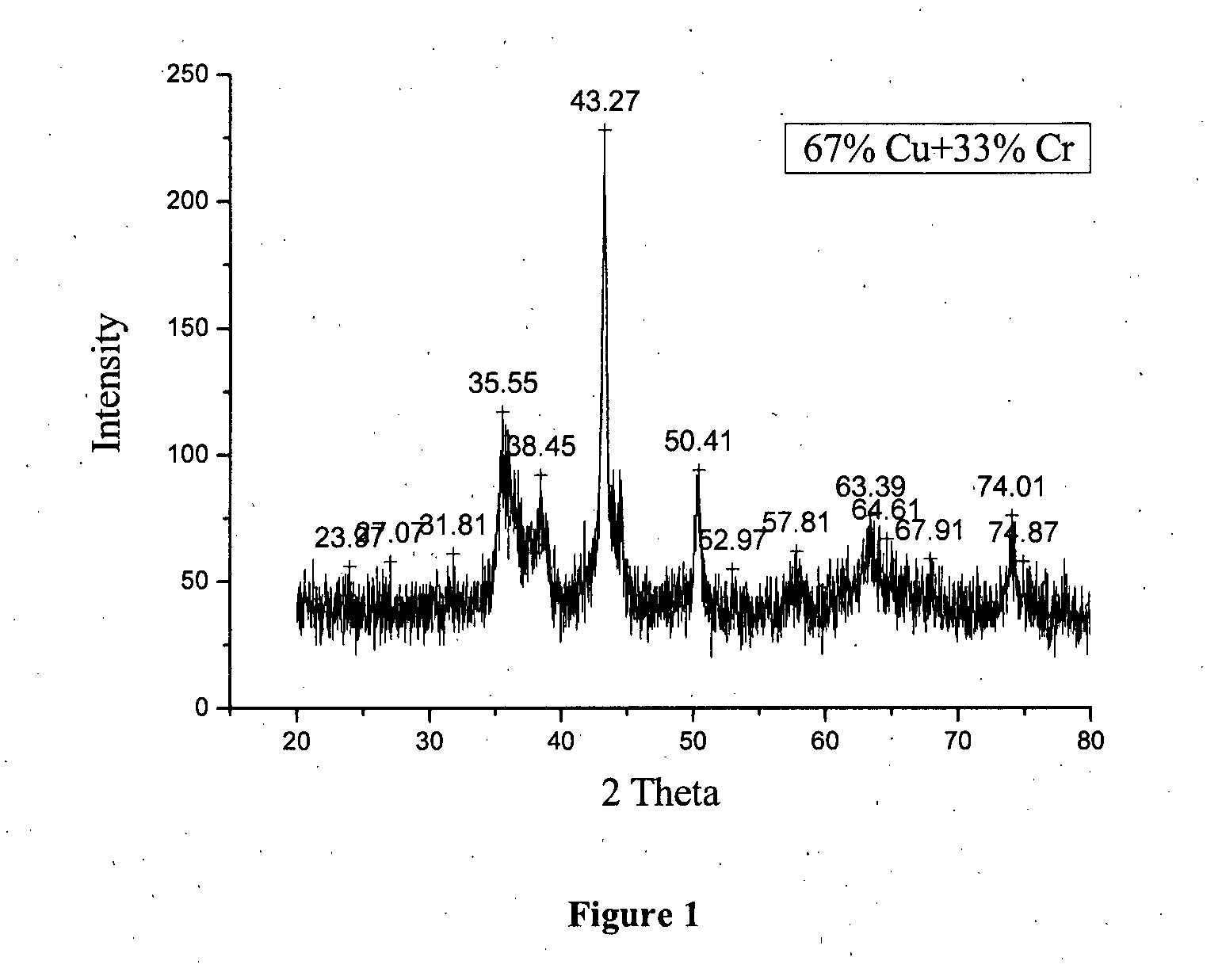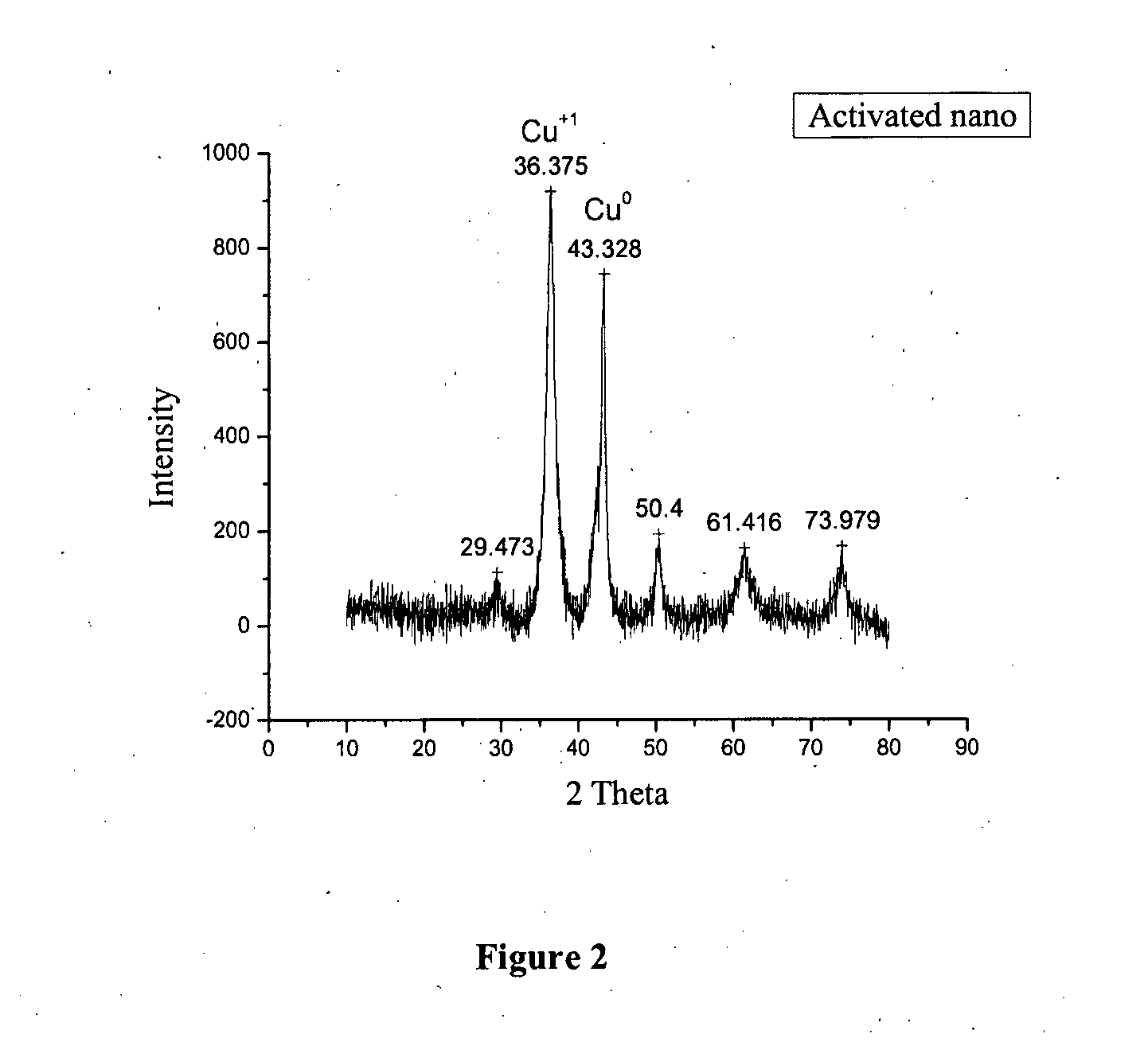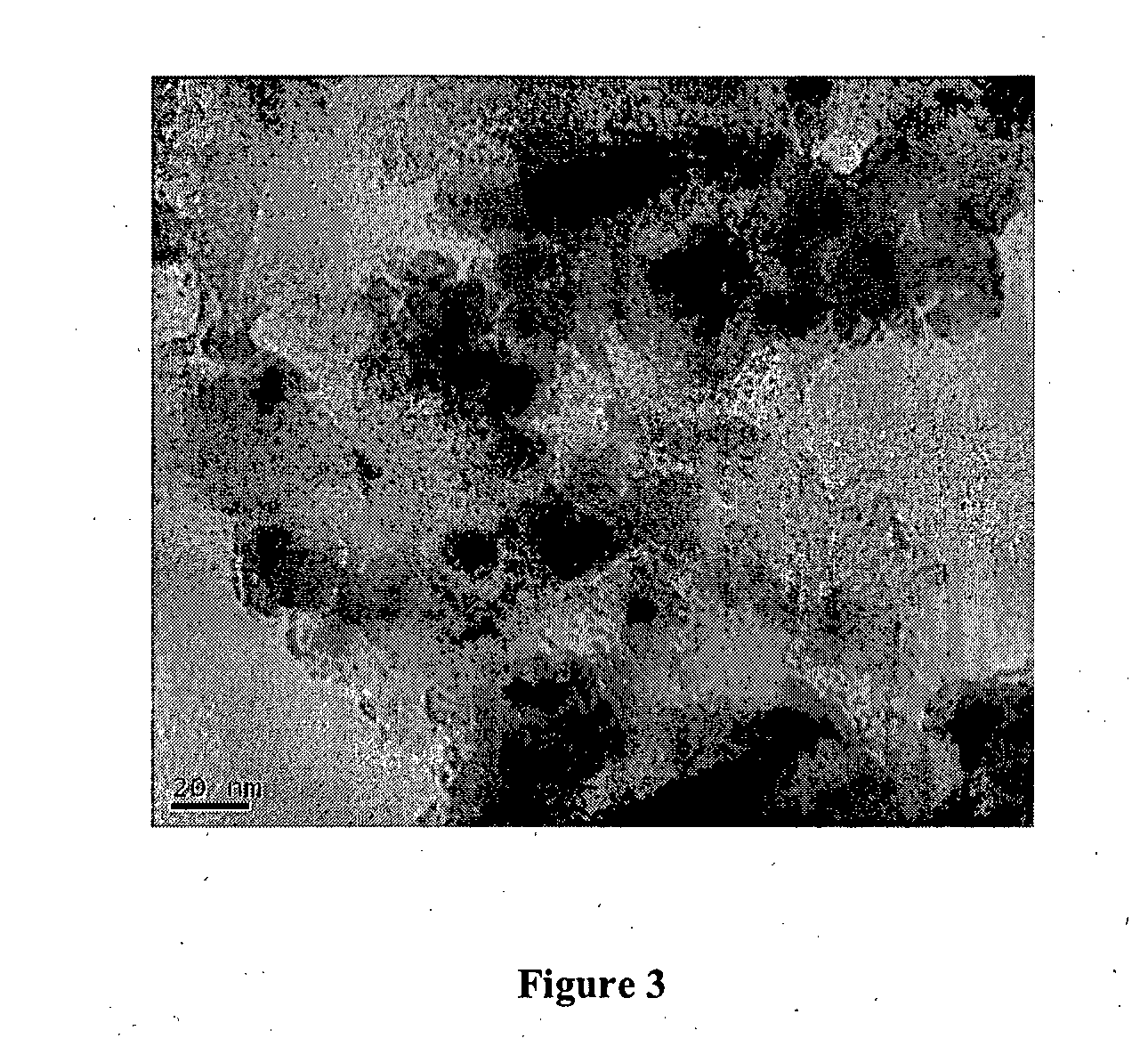Process for preparation of hydroxyacetone or propylene glycol
a technology of hydroxyacetone and propylene glycol, which is applied in the direction of physical/chemical process catalysts, bulk chemical production, metal/metal-oxide/metal-hydroxide catalysts, etc., can solve the problem of major drawback of single-step hydrogenation rou
- Summary
- Abstract
- Description
- Claims
- Application Information
AI Technical Summary
Benefits of technology
Problems solved by technology
Method used
Image
Examples
example 1
Catalyst Preparation: Composition—50% Cu+Cr, 30% Al, 20% Zn
[0049]A mixture of 22.9 g of copper nitrate (0.095 moles of copper), 41.26 g of aluminum nitrate (0.110 moles of aluminum) and 23.5 g of zinc nitrate (0.079 moles of zinc) was dissolved in 200 ml of distilled water. A solution of ammonium chromate was prepared by dissolving 23.69 g of ammonium dichromate in 150 ml distilled water and adding drop wise approximately 22 ml of 30% aq. ammonia solution. The solution of nitrate was stirred while the ammonium chromate solution was poured into it in a thin stream. Stirring was continued till the addition was completed after which reddish brown precipitate was obtained. This precipitate was filtered and dried in oven at 110° C. for a period of 8 h. This dried precipitate was then calcined in a muffle furnace.[0050]Calcination Program: 1 h at 100° C.[0051]1 h at 200° C.[0052]1 h at 300° C.[0053]2 h at 400° C.
[0054]Activation Program: 12 h at 473 K under H2 flow of 42.5 ml / min
Character...
example 2
Catalyst Preparation: Composition—71% Cu+Cr, 19% Al, 10% Ba
[0057]A mixture of 40.25 g of copper nitrate (0.168 moles of copper), 30.98 g of aluminum nitrate (0.082 moles of aluminum) and 10.44 g of barium nitrate (0.041 moles of barium) was dissolved in 405 ml of distilled water. A solution of ammonium chromate (0.129 moles of chromium) was prepared by dissolving 32.7 g of ammonium dichromate in 158 ml distilled water and adding drop wise approximately 25 ml of 30% aq. ammonia solution. The solution of nitrate was stirred while the ammonium chromate solution was poured into it in a thin stream. Stirring was continued till the addition was completed after which reddish brown precipitate was obtained. This precipitate was filtered and dried in oven at 110° C. This dried precipitate was then calcined in a muffle furnace following the programme as specified here under.[0058]Calcination Program: 1 h at 100° C.[0059]1 h at 200° C.[0060]1 h at 300° C.[0061]2 h at 400° C.
[0062]The calcined ...
example 3
Catalyst Preparation: Composition—67% Cu, 33% Cr
[0065]50 g of copper nitrate (0.2069 moles of copper) was dissolved in 165 ml of distilled water. A solution of ammonium chromate (0.1039 moles of Cr) was prepared by dissolving 26.18 g of ammonium dichromate in 123 ml distilled water and adding drop wise approximately 18.158 ml of 30% aq. ammonia solution. The solution of nitrate was stirred while the ammonium chromate solution was poured into it in a thin stream. Stirring was continued till the addition was completed after which reddish brown precipitate was obtained. This precipitate was filtered and dried in oven at 110° C. This dried precipitate was then calcined in a muffle furnace following the programme as specified here under.[0066]Calcination Program: 1 h at 100° C.[0067]1 h at 200° C.[0068]1 h at 300° C.[0069]2 h at 400° C.
[0070]The calcined catalyst was activated for 12 h at 200° C. under H2 flow of 43 ml / min and characterized for surface area and NH3 TPD.
Characterization
[0...
PUM
| Property | Measurement | Unit |
|---|---|---|
| Temperature | aaaaa | aaaaa |
| Temperature | aaaaa | aaaaa |
| Fraction | aaaaa | aaaaa |
Abstract
Description
Claims
Application Information
 Login to View More
Login to View More - R&D Engineer
- R&D Manager
- IP Professional
- Industry Leading Data Capabilities
- Powerful AI technology
- Patent DNA Extraction
Browse by: Latest US Patents, China's latest patents, Technical Efficacy Thesaurus, Application Domain, Technology Topic, Popular Technical Reports.
© 2024 PatSnap. All rights reserved.Legal|Privacy policy|Modern Slavery Act Transparency Statement|Sitemap|About US| Contact US: help@patsnap.com










